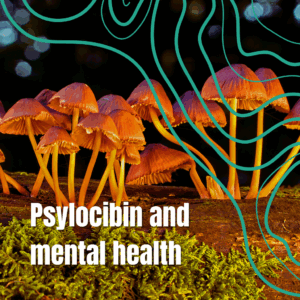

In recent years, cannabinoids have become a hot topic in both scientific research and popular culture. From medical breakthroughs to wellness trends, these natural compounds found in the cannabis plant are gaining widespread attention. But what exactly are cannabinoids, and why are they so important? In this article, we’ll dive deep into the world of cannabinoids, exploring their types, benefits, and how they interact with our bodies.
What Are Cannabinoids?
Cannabinoids are a group of chemical compounds that naturally occur in the cannabis plant. These compounds interact with the human body’s endocannabinoid system (ECS), a complex cell-signaling system that helps regulate various physiological processes such as mood, pain, appetite, and immune response.
There are over 100 different cannabinoids identified in cannabis, but the most well-known and studied ones are tetrahydrocannabinol (THC) and cannabidiol (CBD). Each cannabinoid has unique effects and potential therapeutic benefits.
Understanding the Endocannabinoid System
Before diving into individual cannabinoids, it’s important to understand the endocannabinoid system. Discovered in the 1990s, the ECS plays a crucial role in maintaining homeostasis—keeping your body’s internal environment stable despite external changes.
The ECS consists of three main components:
- Endocannabinoids: Cannabinoids naturally produced by your body.
- Cannabinoid Receptors: Found throughout the body, primarily CB1 receptors in the brain and CB2 receptors in the immune system.
- Enzymes: Responsible for breaking down cannabinoids once they’ve fulfilled their function.
When cannabinoids from cannabis enter your system, they interact with these receptors, influencing various bodily functions.
Key Cannabinoids and Their Benefits
1. THC (Tetrahydrocannabinol)
THC is the most famous cannabinoid because it’s responsible for the psychoactive effects or the “high” associated with marijuana use. It binds primarily to CB1 receptors in the brain, affecting mood, memory, and perception.
Benefits of THC:
- Pain relief
- Appetite stimulation
- Nausea reduction (especially in chemotherapy patients)
- Muscle spasm relief
However, THC can also cause side effects such as anxiety or impaired coordination, which is why its use is regulated in many places.
2. CBD (Cannabidiol)
CBD is non-psychoactive, meaning it doesn’t produce a high. It has gained immense popularity for its potential therapeutic effects without the mind-altering effects of THC.
Benefits of CBD:
- Anti-inflammatory properties
- Anxiety and depression relief
- Neuroprotective effects
- Seizure reduction (FDA-approved Epidiolex for epilepsy)
CBD interacts with both CB1 and CB2 receptors but also influences other receptors and pathways, making it a versatile compound.
3. CBG (Cannabigerol)
Often called the “mother cannabinoid,” CBG is the precursor to both THC and CBD. Though present in smaller amounts, CBG is gaining interest for its potential benefits.
Potential benefits of CBG:
- Antibacterial properties
- Anti-inflammatory effects
- Possible glaucoma treatment
- Appetite stimulation
4. CBC (Cannabichromene)
CBC is another non-psychoactive cannabinoid that may contribute to the overall therapeutic effects of cannabis.
Possible benefits:
- Pain relief
- Anti-inflammatory
- Antidepressant effects
- Supports brain health
The Entourage Effect: Why Cannabinoids Work Better Together
One fascinating aspect of cannabinoids is how they work synergistically with other compounds in the cannabis plant, such as terpenes and flavonoids. This phenomenon is called the entourage effect.
The entourage effect suggests that cannabinoids are more effective when consumed together rather than in isolation. For example, CBD can mitigate some of the psychoactive effects of THC, making the experience more balanced and tolerable.
This is why many experts recommend full-spectrum or broad-spectrum cannabis products over isolated cannabinoids for therapeutic use.
Medical Uses of Cannabinoids
Cannabinoids have shown promising results in treating a variety of medical conditions, including:
- Chronic pain: Cannabinoids can reduce pain by interacting with CB1 receptors in the nervous system.
- Epilepsy: CBD has been proven effective in reducing seizures in certain types of epilepsy.
- Multiple sclerosis: THC and CBD can help alleviate muscle spasticity.
- Anxiety and depression: CBD’s calming effects may help reduce symptoms.
- Cancer: Cannabinoids may help manage chemotherapy side effects such as nausea and vomiting.
- Inflammatory diseases: Their anti-inflammatory properties can be beneficial for conditions like arthritis.
While research is ongoing, many patients report significant relief using cannabinoid-based therapies.
Legal Status of Cannabinoids
The legal landscape for cannabinoids varies worldwide. In many countries, CBD products derived from hemp (containing less than 0.3% THC) are legal and widely available. THC, on the other hand, remains regulated and illegal in many regions due to its psychoactive effects.
It’s important to check local laws before purchasing or using cannabinoid products.
How to Choose the Right Cannabinoid Product
With a growing market, choosing the right cannabinoid product can be overwhelming. Here are some tips:
- Know your needs: Are you looking for pain relief, anxiety reduction, or general wellness?
- Check the cannabinoid profile: Full-spectrum products contain all cannabinoids, broad-spectrum excludes THC, and isolates contain only one cannabinoid.
- Look for third-party lab testing: Ensures product quality and cannabinoid content.
- Consider the delivery method: Oils, capsules, edibles, topicals, and vapes all have different onset times and durations.
- Start low and go slow: Begin with a low dose and increase gradually to find what works best.
The Future of Cannabinoids
Research into cannabinoids is expanding rapidly. Scientists are discovering new cannabinoids and exploring their potential in treating conditions like Alzheimer’s, PTSD, and even cancer.
As legalization spreads and stigma decreases, cannabinoids are likely to become a mainstream option in both medical and wellness fields.
Conclusion
Cannabinoids represent a fascinating intersection of nature and science. From THC’s psychoactive effects to CBD’s therapeutic potential, these compounds offer a wide range of benefits. Understanding how cannabinoids work and the role of the endocannabinoid system can empower you to make informed decisions about your health and wellness.
Whether you’re curious about trying CBD oil or interested in the latest cannabinoid research, staying informed is key. So, let’s keep the conversation going—because when it comes to cannabinoids, there’s always more to learn.

